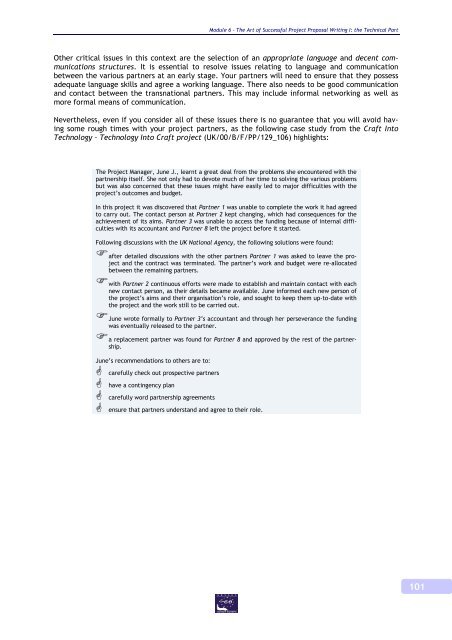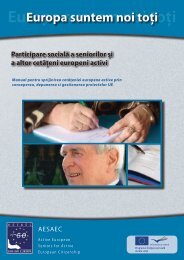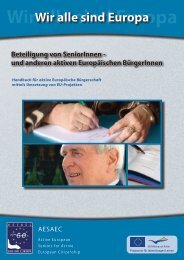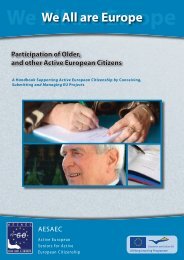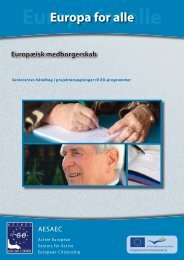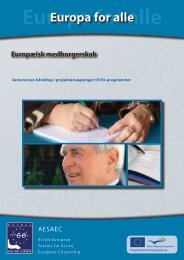We All are Europe - AESAEC
We All are Europe - AESAEC
We All are Europe - AESAEC
You also want an ePaper? Increase the reach of your titles
YUMPU automatically turns print PDFs into web optimized ePapers that Google loves.
Module 6 – The Art of Successful Project Proposal Writing I: the Technical Part<br />
Other critical issues in this context <strong>are</strong> the selection of an appropriate language and decent communications<br />
structures. It is essential to resolve issues relating to language and communication<br />
between the various partners at an early stage. Your partners will need to ensure that they possess<br />
adequate language skills and agree a working language. There also needs to be good communication<br />
and contact between the transnational partners. This may include informal networking as well as<br />
more formal means of communication.<br />
Nevertheless, even if you consider all of these issues there is no guarantee that you will avoid having<br />
some rough times with your project partners, as the following case study from the Craft Into<br />
Technology – Technology Into Craft project (UK/00/B/F/PP/129_106) highlights:<br />
The Project Manager, June J., learnt a great deal from the problems she encountered with the<br />
partnership itself. She not only had to devote much of her time to solving the various problems<br />
but was also concerned that these issues might have easily led to major difficulties with the<br />
project’s outcomes and budget.<br />
In this project it was discovered that Partner 1 was unable to complete the work it had agreed<br />
to carry out. The contact person at Partner 2 kept changing, which had consequences for the<br />
achievement of its aims. Partner 3 was unable to access the funding because of internal difficulties<br />
with its accountant and Partner 8 left the project before it started.<br />
Following discussions with the UK National Agency, the following solutions were found:<br />
after detailed discussions with the other partners Partner 1 was asked to leave the project<br />
and the contract was terminated. The partner’s work and budget were re-allocated<br />
between the remaining partners.<br />
with Partner 2 continuous efforts were made to establish and maintain contact with each<br />
new contact person, as their details became available. June informed each new person of<br />
the project’s aims and their organisation’s role, and sought to keep them up-to-date with<br />
the project and the work still to be carried out.<br />
June wrote formally to Partner 3’s accountant and through her perseverance the funding<br />
was eventually released to the partner.<br />
a replacement partner was found for Partner 8 and approved by the rest of the partnership.<br />
June’s recommendations to others <strong>are</strong> to:<br />
c<strong>are</strong>fully check out prospective partners<br />
have a contingency plan<br />
c<strong>are</strong>fully word partnership agreements<br />
ensure that partners understand and agree to their role.<br />
101


